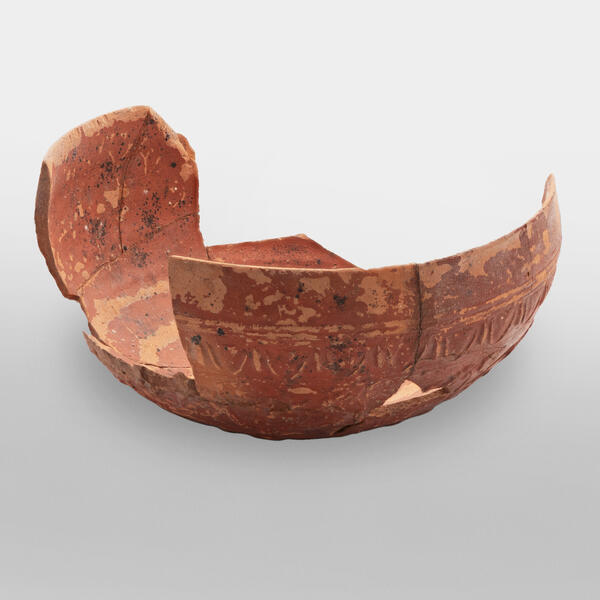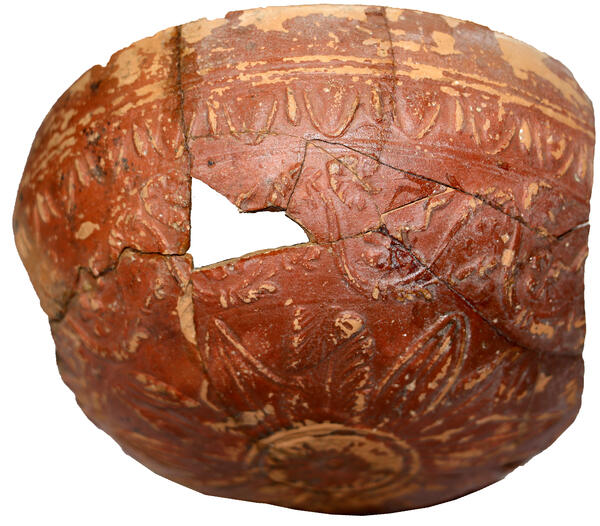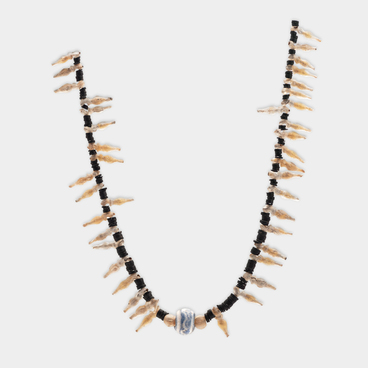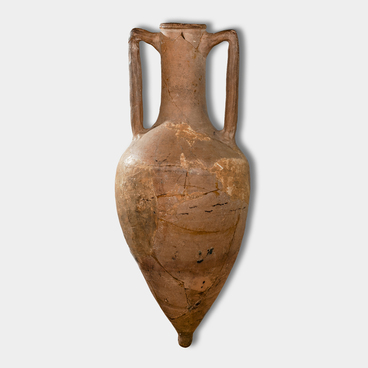The collection of the Tanais Archaeological Museum-Reserve features a Megarian bowl. Ceramics with images in high relief (Megarian bowls) originated in Greece, probably as early as the second half of the 4th century BCE. They became particularly popular during the Hellenistic period. During that time, they were already widespread throughout the ancient world, including the Northern Black Sea Region.
Originally, the center of production of relief ceramics was Pergamon. In this region, there were jewelry workshops associated with the technique used for creating relief images on ceramic vessels. Some researchers believe that the production of such ceramics in the 2nd–1st centuries BCE may have been organized in the centers of the Northern Black Sea Region. Between the 3rd and the 1st century BCE, there were many Hellenistic vessels with images in high relief in Tanais, mostly Megarian bowls. More than 100 fragments of these bowls have been found during excavations at the Tanais settlement and necropolis. One bowl found in Tanais has a dome-shaped body, a thinner rim that is bent inward, and a narrow, almost flat bottom. On the outer surface of the bottom, there is a 16-petal rosette surrounded by a raised bead and a groove. Arranged radially around the rosette are alternating lanceolate and diamond-shaped lotus leaves, as well as acanthus leaves, with alternating tips bent to the right and left. Above this is a band with images of acanthus vines. Still higher, there is a second band of eggs, framed at the top by two relief beads. The vessel is made of orange-yellow clay with small shining elements and coated with a thick red lacquer.
The historian Dmitry Borisovich Shelov suggested that such vessels were produced on the island of Delos. Relief Delos bowls of the 2nd century BCE account for between one third and half of all fragments of this type of pottery found in Tanais. These bowls are most commonly found in the Northern Black Sea Region, and the majority of the Delos ceramic fragments found in Tanais are of this type. Far less common are bowls from Delos with various scenes, such as those with the image of Eroses in chariots. During excavations in Tanais, only several such fragments have been found.



